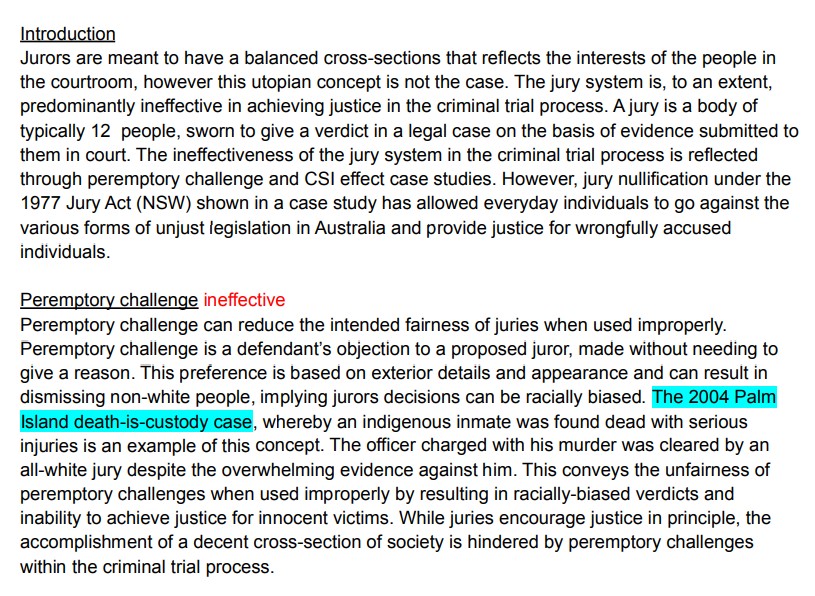Juries Crime Essay
Summary:
This Juries Crime Essay evaluates the effectiveness of the jury system in achieving justice in criminal trials. The jury system involves a group of 12 people who are sworn to give a verdict in a legal case based on evidence submitted to them in court. The article argues that the jury system is predominantly ineffective due to peremptory challenges and the CSI effect. The peremptory challenge can lead to racially-biased verdicts and hinder the ability to achieve justice for innocent victims. The CSI effect can distort jurors’ perception of forensic science, thus hindering their ability to make fair decisions. However, the legal principle of jury nullification under the 1977 Jury Act (NSW) has allowed everyday individuals to go against unjust legislation and provide justice for wrongfully accused individuals. Overall, the article concludes that despite the problems with using juries in criminal trial settings, they improve justice by allowing the public to have a voice in legal proceedings, assisting all individuals in society to achieve justice.
Excerpt:
Juries Crime Essay
Evaluate the Effectiveness of the Jury System in the Criminal Trial
Introduction
Jurors are meant to have balanced cross-sections that reflect the interests of the people in the courtroom. However, this utopian concept is not the case. The jury system is, to an extent, predominantly ineffective in achieving justice in the criminal trial process. A jury is a body of typically 12 people sworn to give a verdict in a legal case on the basis of evidence submitted to them in court. The ineffectiveness of the jury system in the criminal trial process is reflected through peremptory challenge and CSI effect case studies. However, jury nullification under the 1977 Jury Act (NSW), shown in a case study, has allowed everyday individuals to go against the various forms of unjust legislation in Australia and provide justice for wrongfully accused individuals.


Reviews